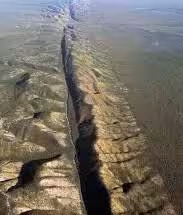The Borrego Springs Quake:
On April 13, 2024, at 09:08:38 (UTC-07:00), a magnitude 3.8 earthquake rattled the serene desert landscape near Borrego Springs, California. While relatively moderate in strength, it served as a poignant reminder of the seismic activity that lurks beneath the surface of Southern California.
A Global Snapshot:
Since the Borrego Springs event, seismic activity has rippled across the globe, manifesting in a series of earthquakes in various corners of the world. Here’s a glimpse into the seismic events that have unfolded since then:
- Puerto Rico (Magnitude 3.4): Just hours after the Borrego Springs quake, Puerto Rico experienced a magnitude 3.4 earthquake off its western coast.
- Philippines (Magnitude 4.8): Simultaneously, the Philippines was rocked by a stronger quake measuring 4.8 in magnitude southwest of Basco.
- Mid-Atlantic Ridge (Magnitude 5.3): In the depths of the ocean, the central Mid-Atlantic Ridge experienced a significant event with a magnitude of 5.3.
- Nicaragua (Magnitude 4.2): Central America felt the tremors too, with a 4.2 magnitude quake striking near El Rosario, Nicaragua.
- Russia (Magnitude 4.2): Far to the east, Russia experienced seismic activity, with a magnitude 4.2 earthquake reported near Kuril’sk.
- Alaska (Magnitude 3.8): The ever-active region of Alaska saw a moderate earthquake measuring 3.8 in magnitude, south-southwest of Unalaska.
- New Zealand (Magnitude 4.6): Across the Pacific, New Zealand experienced a significant quake with a magnitude of 4.6 near the Kermadec Islands.
- Argentina (Magnitude 4.5): South America wasn’t spared, with a magnitude 4.5 earthquake striking near Embarcación, Argentina.
- Texas (Magnitude 2.7): Even inland regions felt the earth’s movements, with Texas experiencing a minor tremor measuring 2.7 in magnitude near Balmorhea.
- Greece (Magnitude 4.5): The ancient land of Greece experienced seismic activity, with a magnitude 4.5 earthquake reported near Mantoúdi.
Understanding Simultaneous Seismic Activity:
The occurrence of multiple earthquakes around the world within a short timeframe raises questions about interconnected geological processes. While individual seismic events have localized causes, the broader pattern suggests a complex interplay of tectonic plate movements.
Why Do Many Quakes Happen Around the Same Time?
- Ring of Fire: A significant portion of the world’s earthquakes occur around the Pacific Ring of Fire, where several tectonic plates meet. Seismic activity in one region can trigger events in adjacent areas.
- Fault Lines: Earth’s crust is crisscrossed with fault lines. When stress builds up along these faults, it can lead to sudden release of energy, causing earthquakes.
- Global Connectivity: Seismic waves can propagate through Earth’s crust, triggering events thousands of kilometers away. This interconnectedness contributes to clusters of earthquakes occurring simultaneously.
Should San Diegans Be Concerned?
While San Diego isn’t immune to earthquakes, the recent cluster of seismic events around the world doesn’t necessarily indicate increased risk for the region. However, it’s crucial for San Diegans to remain prepared and vigilant.
Key Points for San Diegans:
- Earthquake Preparedness: Ensure homes and buildings are earthquake-resistant, and have emergency kits ready.
- Stay Informed: Keep track of local seismic activity and follow guidance from authorities.
- Community Resilience: Engage in community preparedness efforts to strengthen resilience against earthquakes and other natural disasters.
In conclusion, while the recent flurry of earthquakes worldwide may seem alarming, it’s a reminder of Earth’s dynamic nature. San Diegans should remain prepared, but not unduly alarmed, as vigilance and preparedness are key to mitigating the impact of seismic events. Stay informed, stay safe.

